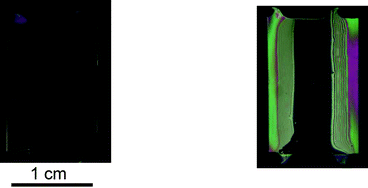Detection of organophosphate pesticides using a prototype liquid crystal monitor
Abstract
The precision and accuracy of a prototype wearable liquid crystal monitor (

* Corresponding authors
a
Division of Environmental Health Sciences School of Public Health, University of Minnesota, MMC 807, Room 1260 Mayo, 420 Delaware Street, S.E, Minneapolis, USA
E-mail:
jadgate@umn.edu
Fax: +612.626.4837
Tel: +612.624.2601
b
Platypus Technologies LLC, 5520 Nobel Drive Suite 100, Madison, USA
E-mail:
bacharya@platypustech.com
Fax: +608 237 1271
Tel: +608 237 1270 Ext 321
The precision and accuracy of a prototype wearable liquid crystal monitor (

 Please wait while we load your content...
Something went wrong. Try again?
Please wait while we load your content...
Something went wrong. Try again?
J. L. Adgate, A. Barteková, P. C. Raynor, J. G. Griggs, A. D. Ryan, B. R. Acharya, C. J. Volkmann, D. D. Most, S. Lai and M. D. Bonds, J. Environ. Monit., 2009, 11, 49 DOI: 10.1039/B806954A
To request permission to reproduce material from this article, please go to the Copyright Clearance Center request page.
If you are an author contributing to an RSC publication, you do not need to request permission provided correct acknowledgement is given.
If you are the author of this article, you do not need to request permission to reproduce figures and diagrams provided correct acknowledgement is given. If you want to reproduce the whole article in a third-party publication (excluding your thesis/dissertation for which permission is not required) please go to the Copyright Clearance Center request page.
Read more about how to correctly acknowledge RSC content.
 Fetching data from CrossRef.
Fetching data from CrossRef.
This may take some time to load.
Loading related content
